May 2025
I’ve seen so many American homes that look like Victorian dolls houses.
Look at these beauties. These would be for girls like Nelly, from Little House on the Prairie. To get them open, you’d unhook a tiny silver latch between the front facade and the rest of the house. A mother might be present, the precious dolls house might be displayed on a high surface, in the front room perhaps.
Mother (or older sister) would open the house gently, the facade on brass or silver hinges, little gingham curtains and lace blinds lifting slightly from the windows with the movement.
And then the rooms would be exposed: a tiny kitchen cabinet displaying white plates and cups; teeny-weeny copper pots on the kitchen walls and tiny wooden beds with delicate layers of sheets and quilts.
The fancier the house, the more impossibly perfect little replicas would be present: minature chair cushions and floor rugs; a perfect oval mirror; a painted armoire. If you were lucky there would be wallpaper with oh-so-fine fine patterning. Perhaps there would be little people in rocking chairs by the fire – perhaps a baby with a head as small as the top of a matchstick, sleeping snugly in its crib.
That was the ideal. It was the kind of toy that Laura Ingalls-Wilder and her Little House on the Prairie sisters might have dreamed of and discussed.
But that dolls house was beyond the reach of almost any little girl, past or present. That dolls house is up there with freshly-brushed minature ponies and child-sized steam trains.
And yet, it did exist.
I know this, because I found one. It’s on display at the Building Museum in Washington DC.
Altadena’s House, from 1895, is not the world’s only existing (fantasy) Victorian dolls house, but it is a perfect example of the form.
It has seven fully-furnished rooms, including an attic room (notice the hinged section of the roof). It was has had two owners: a mother and her daughter.
And here is a level of luxury beyond any little girl’s imagining: the silver candlesticks are real silver; the white porcelain plates are real porcelain. The white fur rug was made by a furrier from real ermine. All the wooden furniture is, in fact, wooden.
This is baby’s room, with the ermine rug and hand-painted furniture. In the nursery, there’s a fold-up crib, a cot that rocks and a four-poster bed. The windows are dressed with net. Downstairs, the kitchen windows are dressed with scalloped gingham and curtain tie-backs.
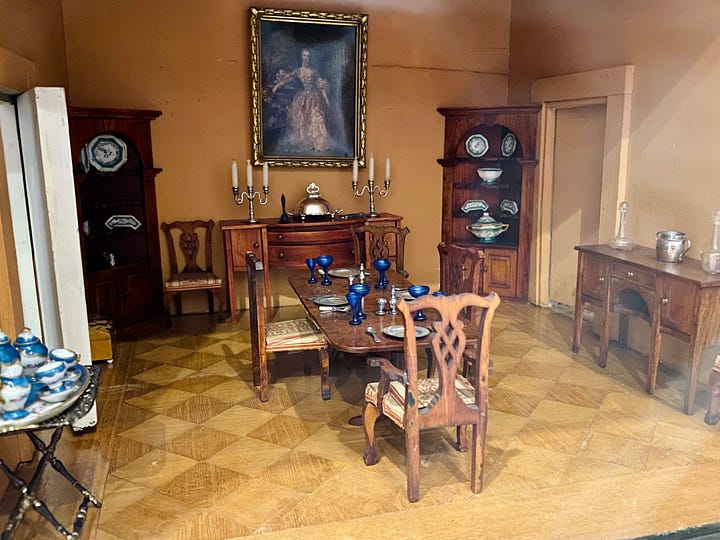
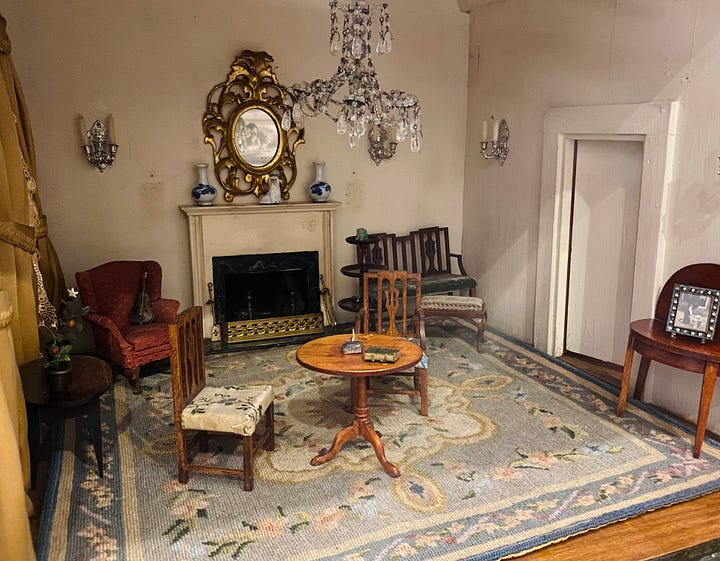
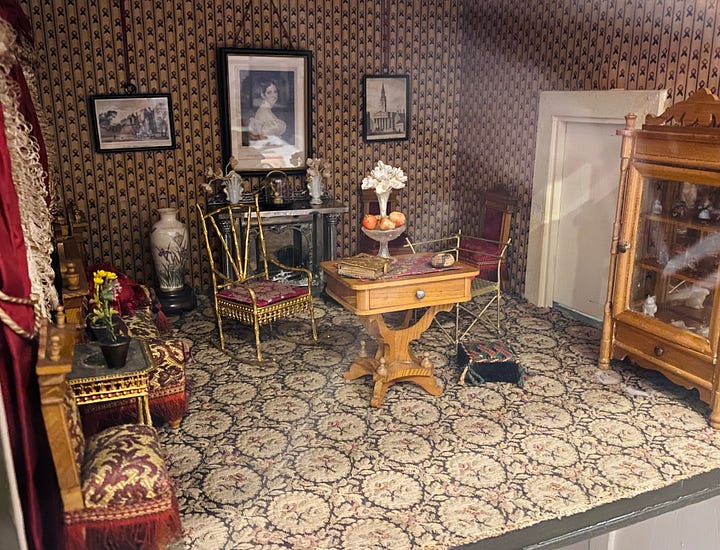
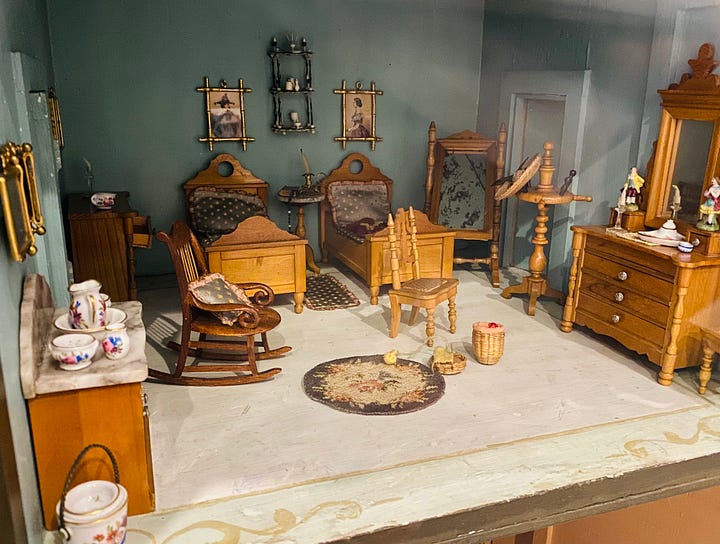
Here’s some more of the house.
You might be surprised to hear that I don’t love it. I only like it because it reminds me of my mother. She liked making bedding for dollies. She would edge dolly pram sheets with lace. She used to search for tiny florals for her log cabin patchwork quilt. She liked some of the more magnificent aspects of the Victorian aesthetic: pictures draped from hanging rails; super-sized patterned rugs and chandeliers. So she would have enjoyed layering the interiors.
My daughter likes tiny things – that was another reason for me to linger around Altadena’s house. Given the chance, I imagine my mother would have set to kitting out a dolls house for Ella – ordering furniture and crocks, framing postage stamps and cutting up gift wrap for wallpaper.
Nice thoughts. But I’ll tell you what boiled my veggies: this groovy pad, produced by ‘Womens Day’ magazine in 1976.
It’s not a dollhouse as such. This is a ‘Dream of a Dollhouse’, one of a series by the magazine.
The idea was that Womens Day would encapsulate the decor ideals of a decade with a 3-D model. So it’s a kind of dolls’ house-architect’s model hybrid.
In the 1950s, the magazine put out a flat-roof, modular home. The 1980s dream dolls house was more nostalgic: a traditional two-storey home with ‘country’-style furnishings.
This 1970s one was designed by Ira Grandberg and features skylights and floor-to-ceiling windows.
It has a back patio with seating for outdoor dining, and a dramatically sloping roof.
I can’t get enough of it: the parquet floor; the chrome-and-glass coffee table; the plaster effect on the walls … The blonde wooden box couch with orange cushions is central to the home’s design, along with the giant abstract painting, spherical paper lantern, groovy sculptural standing lights and African masks above the fireplace.
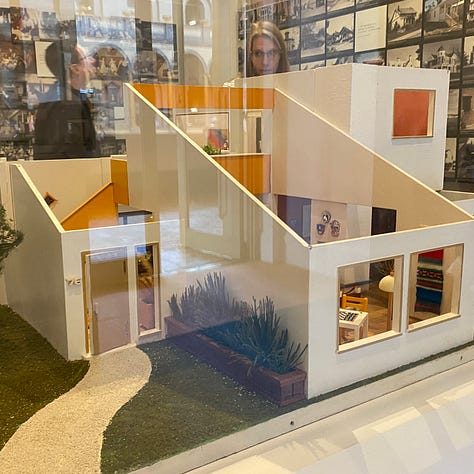

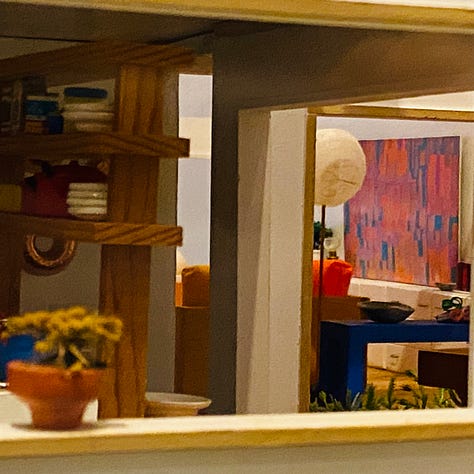
The masks and the checkers (draughts) table get a thumbs-downs from me, but I’m mad for the bright blue dining table, the floating shelves in the kitchen and the indoor-outdoor flow.
Also, who wouldn’t want a red deckchair-footstool set outside and a mustard armchair inside? I love the sweep of the front path (like the underline of the original Coca-Cola logo), the sand-coloured accent walls and the wall-long, built-in console.
My mother might have enjoyed doing the handsewing and careful glueing required for a Victorian dollhouse. But I’d like a 1970s one, similar to this, but with plastic furniture you can wash in the sink, and plastic walls you can clean with a hose.
My Weekend Sindy would look good on that red deckchair. You can run her under the tap too.

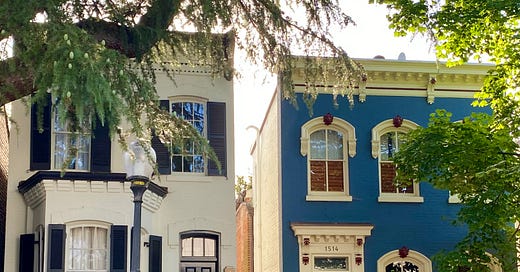




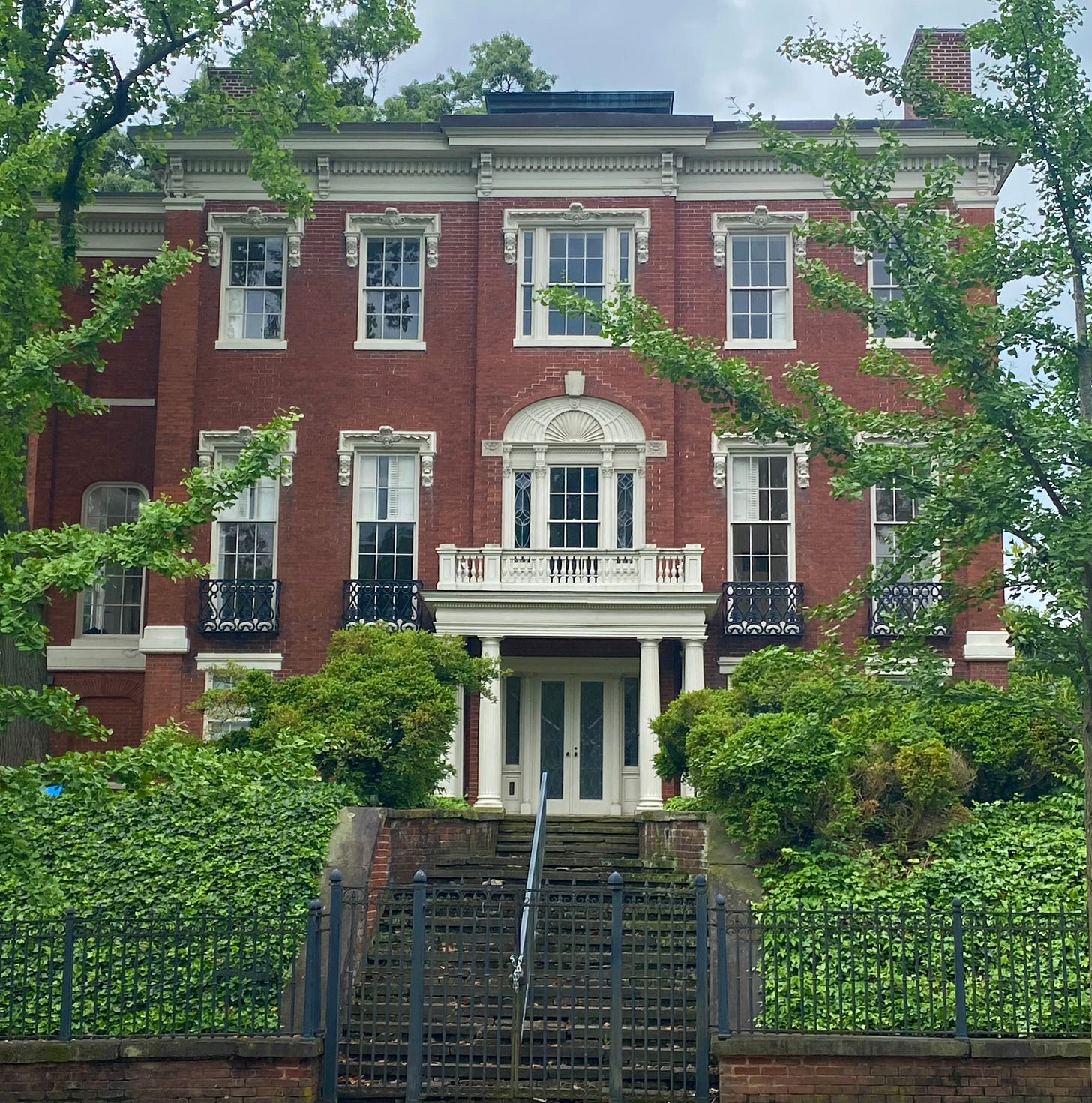

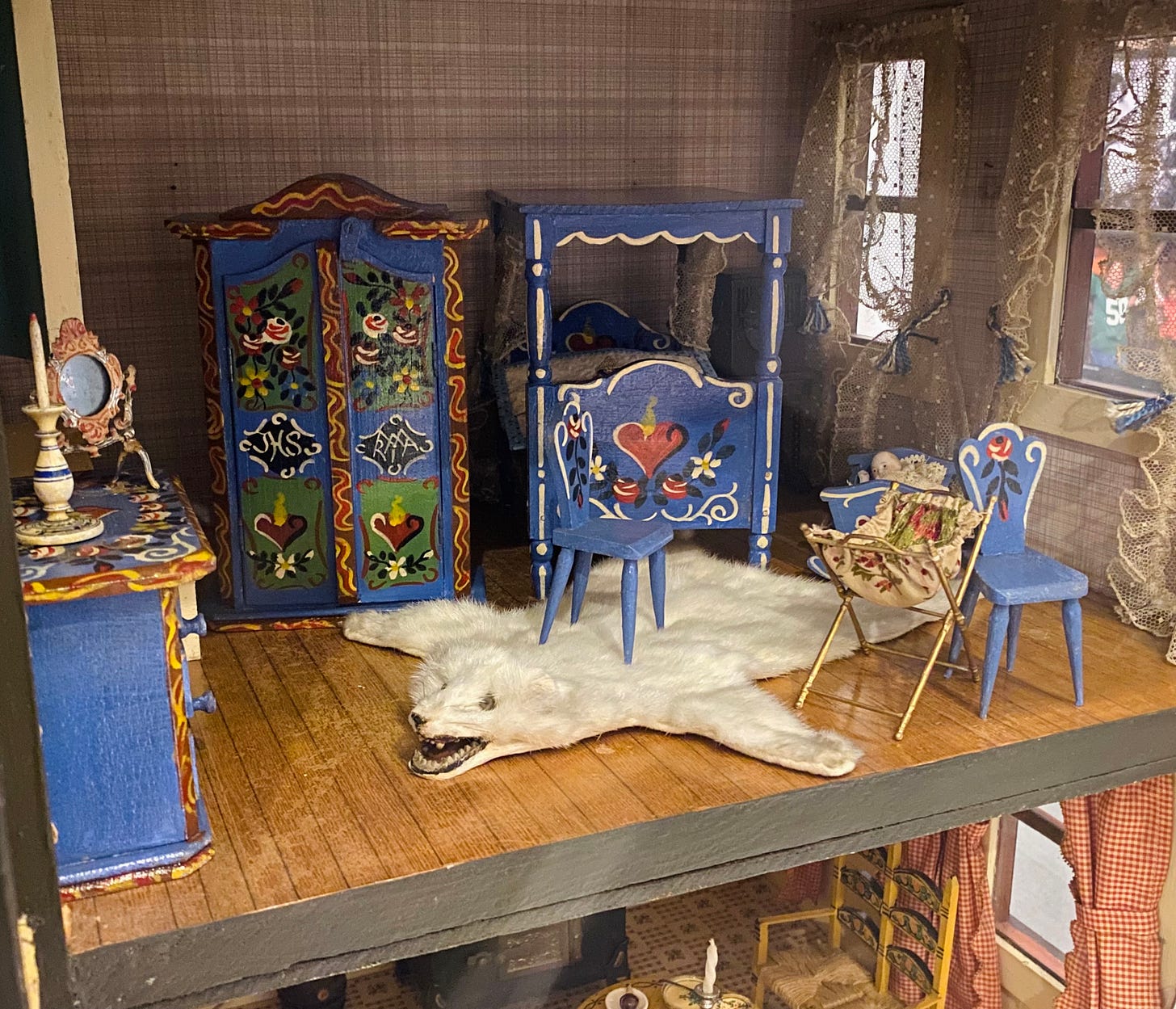


I delighted in that "boiled my veggies" expression - until it sank in.....boiling veggies is such a sad way to treat them. Thanks for this quaint read Daisy.
My parents made me a doll's house one year, it had the same curtains as I had in my bedroom. Eventually it went to my younger cousin. I hope it's still in use somewhere.